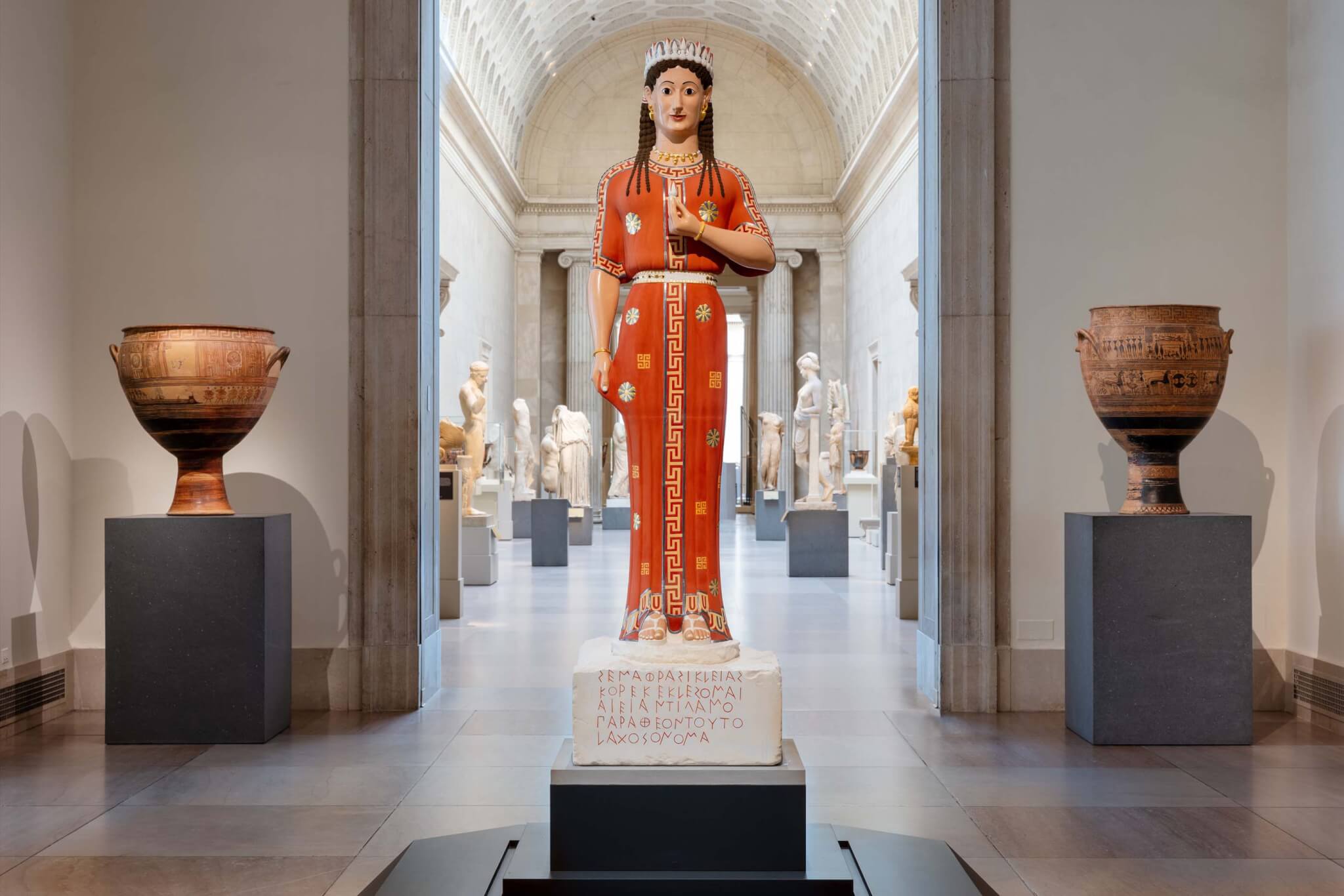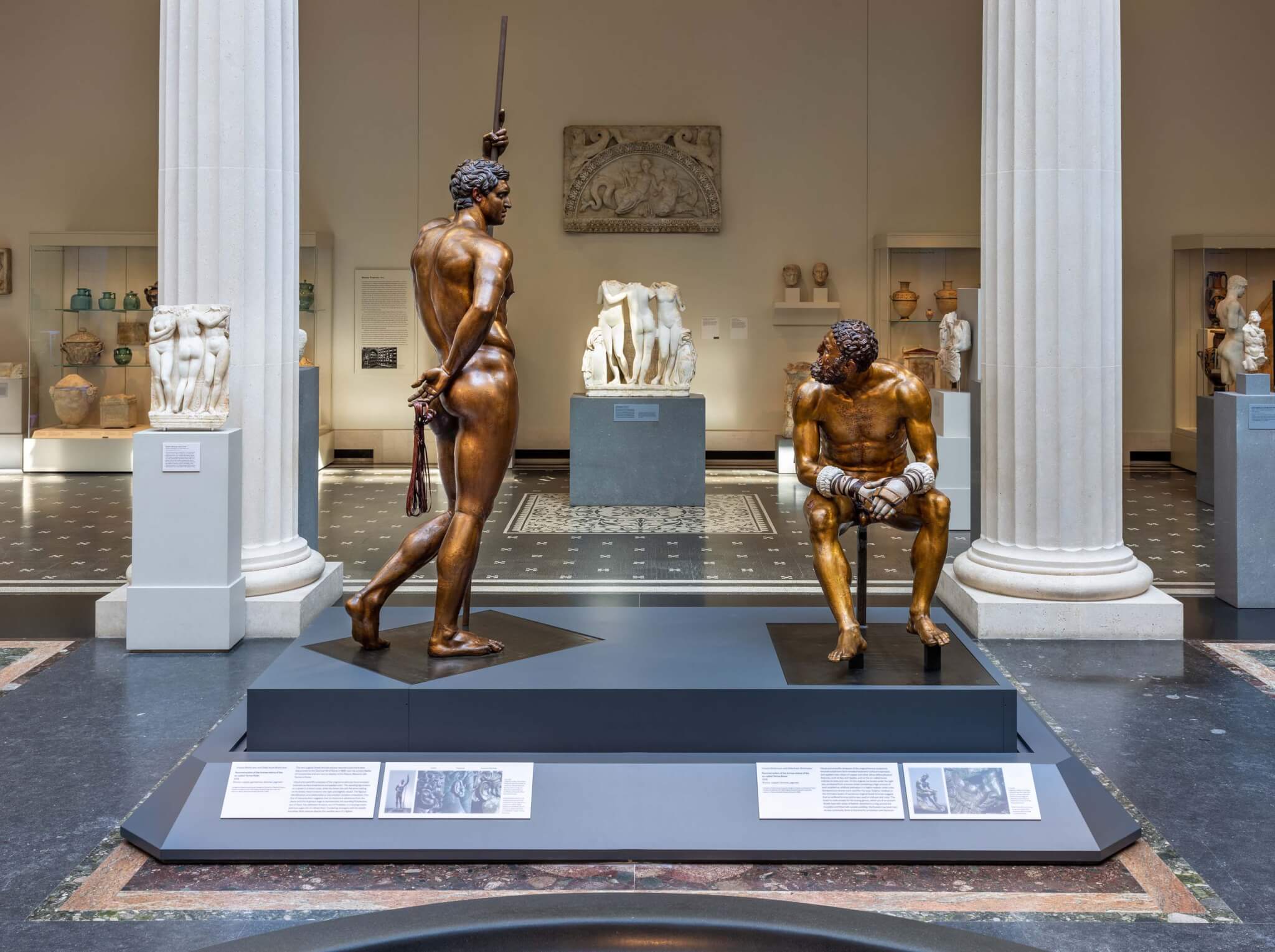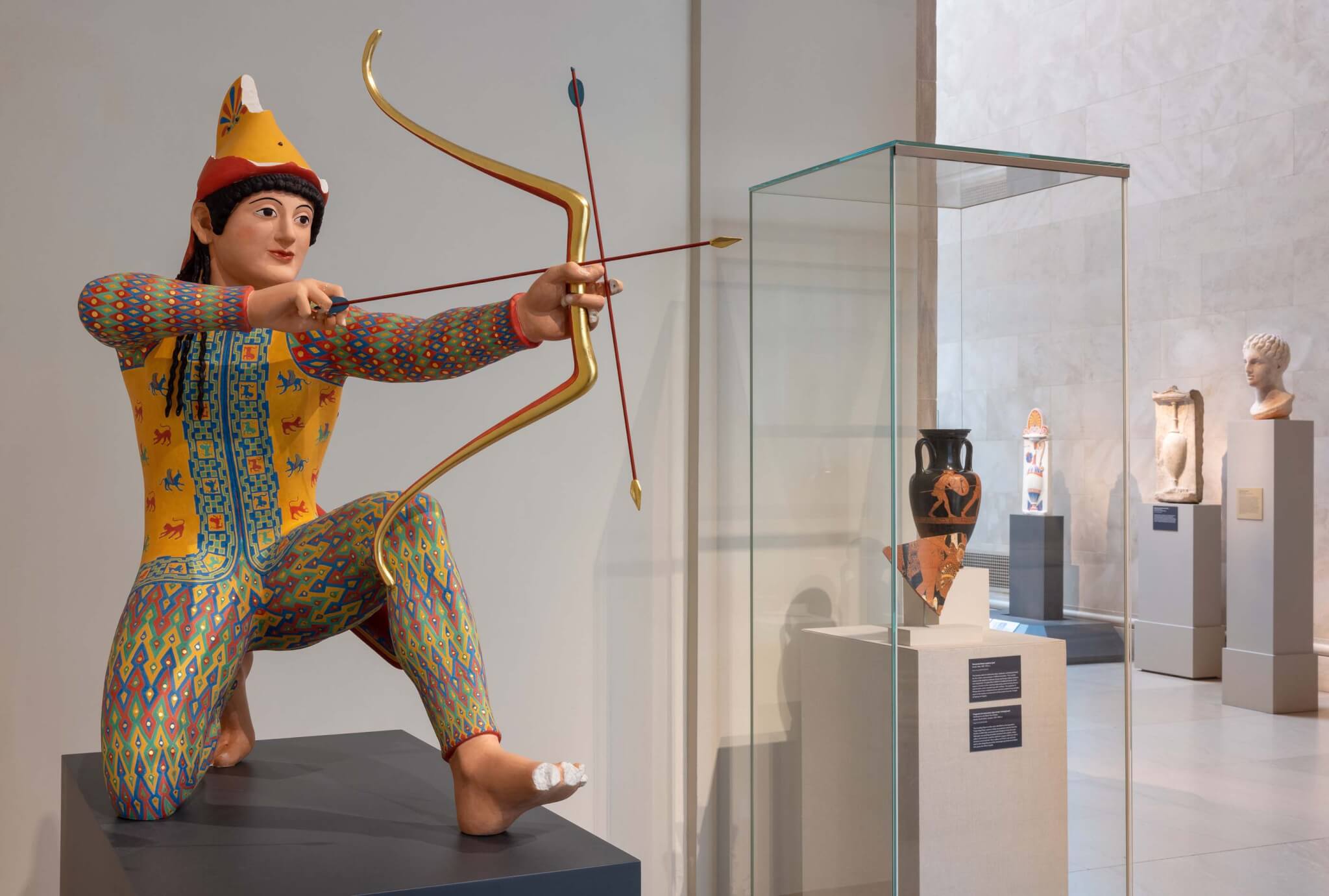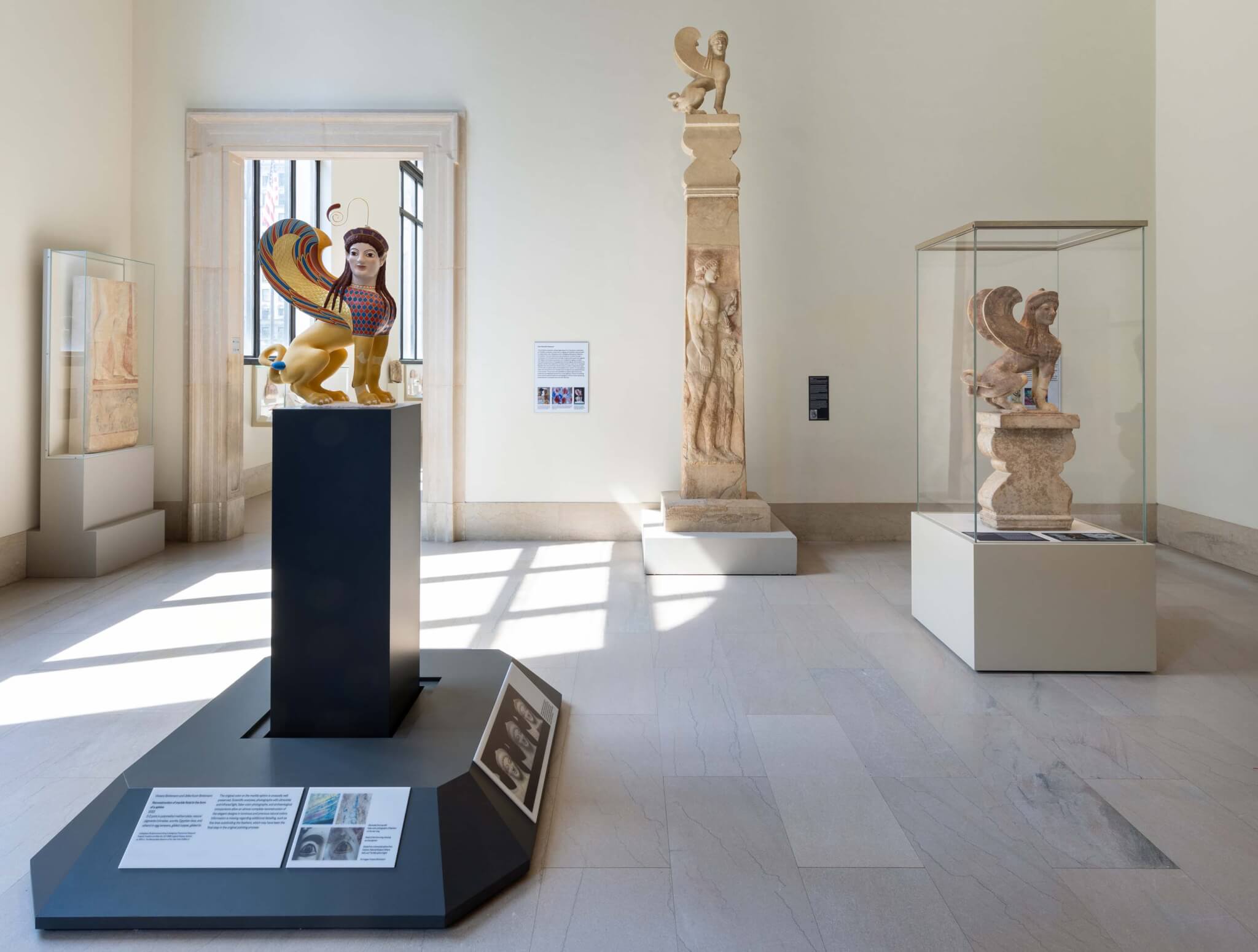Chroma: Ancient Sculpture in Color
Metropolitan Museum of Art
1000 Fifth Avenue
New York, NY 10028
Open through March 26, 2023
Color perception is relative, optically and culturally. Take, for instance, the shade of Homer’s wine-dark sea: It depends on who is tossing about upon it, where, and when. Chroma: Ancient Sculpture in Color sails right into these wavelengths, anchoring 17 experimental painted replicas of statues and slabs within the Metropolitan Museum’s Greek and Roman galleries. The reconstructions by husband-and-wife archaeologists Dr. Vinzenz Brinkmann and Dr. Ulrike Koch-Brinkmann represent Cycladic, Archaic Greek, Classical, Hellenistic, and Roman periods which span the collection’s timeline from 4500 B.C. to 312 A.D.
When approaching an exhibition of classical antiquities, centuries of assumptions prepare us for raw limestone and marble figures installed in spare, skylit galleries. The Met fulfills and then confounds this expectation. Upon entering McKim, Mead & White’s neoclassical Greek and Roman galleries (renovated by Kevin Roche John Dinkeloo and Associates in 2007), the usual pale suspects are upstaged by the funeral stele of Phrasikleia. The Brinkmanns’ replica of this 6th century statue is painted in full, from the gum arabic lacquer of her brown irises to the gilding and patterning of her red-hued garment. Heralding an introductory text panel, she sends you on an odyssey through the galleries to discover her brethren and the real start of the show, installed in a mezzanine gallery up a nondescript flight of stairs.

The Brinkmanns’ handiwork ranges from a doll-sized Cycladic figure, nestled in a case among similar artifacts, to a pair of Roman boxers dominating the peristyle hall and rendered in a stunning range of simulated metals. Brief text panels, mounted on some study collection cases, accentuate themes such as representation of African peoples or the mineral components of pigments. Signage, pedestals, and object labels are eclectic, making wayfinding a challenge. A downloadable augmented reality app by Bluecadet is of little help. Like a classical Pokémon Go, it simulates a sphinx in your living room but proves useless for locating works in the real-life galleries. (I’m still not sure I caught them all.)
The overall impact is breathtaking, however. Suddenly the familiar permanent collection is bursting with color and ornament in terra cotta, metalwork, and glass, from a tiny carved gemstone to room-sized Roman frescoes. Chroma is a welcome reminder that classical antiquity was cosmopolitan, with disparate cultures interacting over the course of centuries.

This is vividly evinced by the reconstruction of a marble archer from a pediment of the Temple of Aphia. The archer is believed to represent Paris, the mythical Trojan prince. The work is from the Hellenic period, considered the classical apotheosis, yet the figure is costumed as a Persian, Scythian, or Anatolian (interpretations vary), sporting densely patterned leggings and tunic under a bright yellow vest.

The mezzanine installation puts the reconstructions in additional historiographic context. One video delves into the Brinkmanns’ approach, and another explores the challenge of recording and interpreting evidence. We learn how colors faded during excavation and how aggressive cleaning and polishing further destroyed pigments. We learn how the search for pigment spurred development of sophisticated techniques to find it.
Polychromy has previously been a focus for Met staff, including former director and classical scholar Edward Robinson, who sought out acquisitions with evidence of applied color, and Curator of Greek and Roman Art Gisela M. A. Richter, who proposed her own color restoration of the sphinx. While a critical examination of this institutional history is limited, Chroma’s investigation and its integration into the traditional installation represents a step on this journey, along with the removal of allegedly looted artifacts from the Met, and the promising renovation of the Ancient Near Eastern and Cypriot Art galleries by NADAAA’s Nader Tehrani scheduled to open in 2025. The odyssey promises to be difficult—and transformative.

Perhaps most importantly, through experiencing Chroma, one realizes that like color, classicism is also relative and perceived through the culture of its time. These perceptions lately include an imagined hegemony of white western culture built on a fictional tradition of rationality and order. In our time and related to architecture, this manifested most recently as a short-lived Trump executive order prescribing neoclassicism for federal buildings. Chroma reminds us that the whiteness of classicism is not neutral.
Jennifer Tobias is a scholar and illustrator based in New York City.











